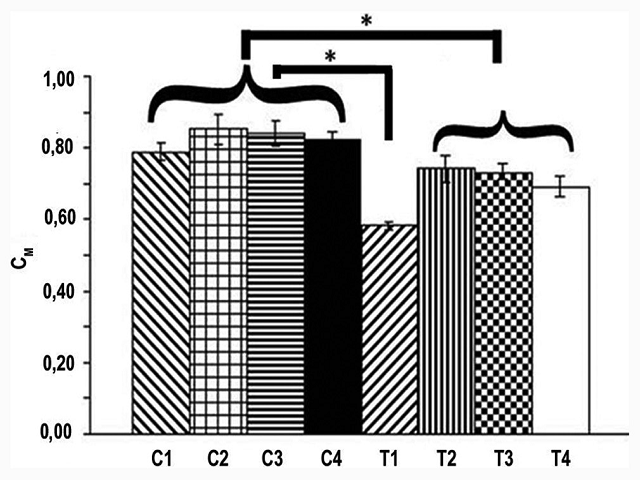In vitro action of 2.2’-azobis-2 amidinopropan dihydrochloride, red wine polyphenols, resveratrol and catechin on anion permeability for chloride in human red blood cell
DOI:
https://doi.org/10.5530/fra.2014.2.3Keywords:
Anion permeability for chloride, Hemolysis, Lipid peroxidation and red blood cells, Natural antioxidants, 2.2’-azobis-2 amidinopropan dihydrochloride oxidating agentAbstract
Introduction: The purpose of this study was to evaluate the ability of polyphenols (red wine polyphenols, resveratrol and catechin) on anion permeability for chloride and oxidative damage in human erythrocytes exposed to the water-soluble free radical initiator 2.2’-azobis-2 amidinopropan dihydrochloride (AAPH). Materials and Methods: The reducing agent treatment efficacy was observed by evaluation of anion permeability for chloride, lipid peroxidation and hemolysis in red blood cells (RBCs). Anion permeability for chloride is an indicator of membrane protein damage and is evaluated in RBCs by the specific absorption of methemoglobin (CM) at 590 and 635 nm after treatment of heparinized blood with NaNO2. The measurement of the membrane lipid degradation is obtained by the determination of malondialdehyde. The lipid peroxidation susceptibility is observed after the oxidative stress induced by AAPH. The hemolysis assays are conducted on blood samples in phosphate buffer saline and the morphological changes of erythrocytes are observed by optical microscopy as membrane damage verification parameter. Results: Polyphenol treatment is associated with a significant increase in anion permeability for chloride compared with control and AAPH affected cells. Treatment with polyphenols was associated with a significant reduction in mean ± standard error of the mean membrane lipid peroxidation compared with control and AAPH treatment. Hemolysis data are also obtained in the previously described conditions. RBCs morphology data indeed confirm previous observations. Conclusion: In this study, it is evident that after in vitro oxidative damage of the membrane, red wine polyphenol extracts are as effective reducing agents also on CM indicator of membrane protein damages. Consequently, both red wine and polyphenol extracts both alone and mixed among them efficiently relieve the effects of oxidative stress.
Downloads
Metrics





